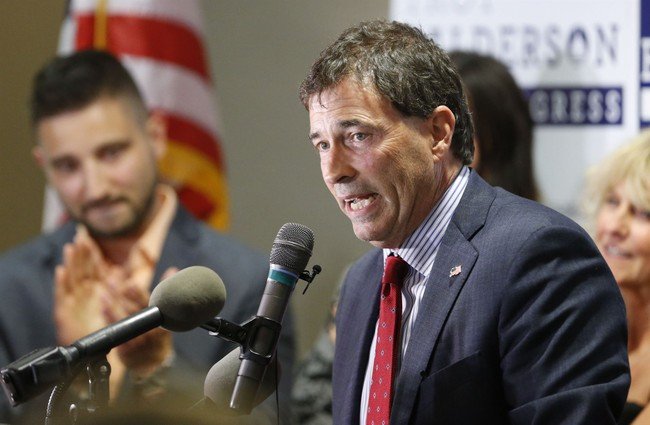WASHINGTON — Months after the implementation of the improved federal student financial aid application form In the wake of a series of highly publicized problems that have caused application delays and frustration for students and their families, a government watchdog on Tuesday provided additional explanations about what went wrong and recommendations for the U.S. Department of Education going forward.
Members of the U.S. House of Representatives Subcommittee on Higher Education and Workforce Development expressed their frustration Tuesday over the program’s failure to deliver and its consequences for students and their families during a hearing that coincided with the release of a couple of arrangements With Government Accountability Office on the major issues that have hindered the implementation of the Free Application for Federal Student Financial Aid, or FAFSA, for 2024-25.
Although the application underwent a makeover after Congress passed the FAFSA Simplification Act, advocates have raised concerns about processing delays resulting from the changes to the form no adjustment to inflation, his error in formula calculation and his tax data errors. Initially, significant problems prevented parents without a Social Security number from completing the form.
The department has been working to resolve issues with the form for the 2024–2025 school year and has reassessed the implementation of the form for the 2025–2026 school year, taking into account feedback from students, families, and stakeholders.
On Monday the department published a report Reviewing the 2024–2025 form rollout and progress made to improve user experience since the launch of the simplified form.
Part of this effort includes the department using the phased implementation of the 2025-26 form to resolve any issues that may arise before the form is made available to all interested parties by December 1. With this phased approach, the 2025-2026 FAFSA will be fully available two months later than usual.
Members of both parties criticized the implementation of the 2024-25 form at Tuesday’s hearing.
Subcommittee Chairman Burgess Owens said the “FAFSA rollout has been fraught with delays, errors, frustration — and, for some of our most vulnerable students — the loss of their higher education dreams.”
The Utah Republican said the “real-life impact of the Biden administration’s failure is devastating.”
Rep. Frederica Wilson, a member of the subcommittee, said the implementation of the FAFSA Simplification Act “has been hampered by a series of mistakes by the Department of Education, which has led to delays and ongoing failures in the rollout of the new application.”
The Florida Democrat expressed frustration that “apart from the dozens of letters that Congress has sent, this is not the first hearing this year on this same issue, nor is this the first filing cycle on these issues.”
No information available
In one of two GAO reports released Tuesday, the watchdog found that about 432,000 fewer people filed the FAFSA than last year, down 3% from the end of August.
According to the GAO, the decline in applications was “most pronounced among students and lower-income families.”
Investigators also found that the department did not consistently and timely provide students with information about delays in application processing, changes in student aid eligibility or “solutions to technical barriers they encountered during the application process.”
Melissa Emrey-Arras, the GAO director overseeing education work, said at Tuesday’s hearing that the delays “make it much more difficult for (students) to choose a college, to think wisely about their finances and whether they can afford school.”
“Can you imagine? It’s like buying a house but not knowing how much help you’re going to get and having to make a commitment right away,” Emrey-Arras said.
Staff shortages lead to missed calls
The government watchdog also found that staffing shortages resulted in almost three-quarters of all calls to its call centre going unanswered in the first five months of the programme’s rollout in 2024-25 – a total of 4 million out of 5.4 million calls.
When it comes to communications with schools, the GAO found that the department “continually failed to meet promised deadlines and provide schools with adequate advance notice” of schedule changes throughout the 2024–2025 FAFSA implementation period.
Marisol Cruz Cain, the GAO director overseeing information technology work, said the Office of Federal Student Aid “failed to fully test the system, which led to numerous performance issues.”
Cruz Cain said that after the initial rollout, “FSA identified 55 deficiencies, which is almost twice as many as were identified during pre-launch testing of the entire system.”
Improvement plan
On Monday letter to presidents of colleges and universities Regarding progress on the 2025-26 form, U.S. Secretary of Education Miguel Cardona said the department “has worked tirelessly to completely overhaul a system that has remained largely untouched for more than four decades and itself included two dozen different subsystems that required significant changes — a fundamental transformation to enable the most radical changes to federal financial aid eligibility and processes in years.”
The department described in its report Monday 10 steps it has taken to improve the FAFSA application process, including increasing the number of call center agents — more than 700 novel agents have been added. The department is also working to address the challenges families without Social Security numbers face in filling out the form.
The department’s actions also include strengthening the leadership team and offering “additional outreach and support to students and families who need the most help completing the form.”
In a statement in response to Tuesday’s hearing, a department spokesperson said that “following the first major overhaul of the FAFSA system in more than four decades, more than 500,000 more students are eligible for Pell Grants than at this time last year.”
“We sought advice from students and families, colleges and partners, and submitted over 1,000 documents to the Government Accountability Office,” the spokesperson added. “Thanks to that input, as well as community partnerships, we have now reduced the FAFSA completion gap to about 2% compared to this time last year — down from 40% in March.”


